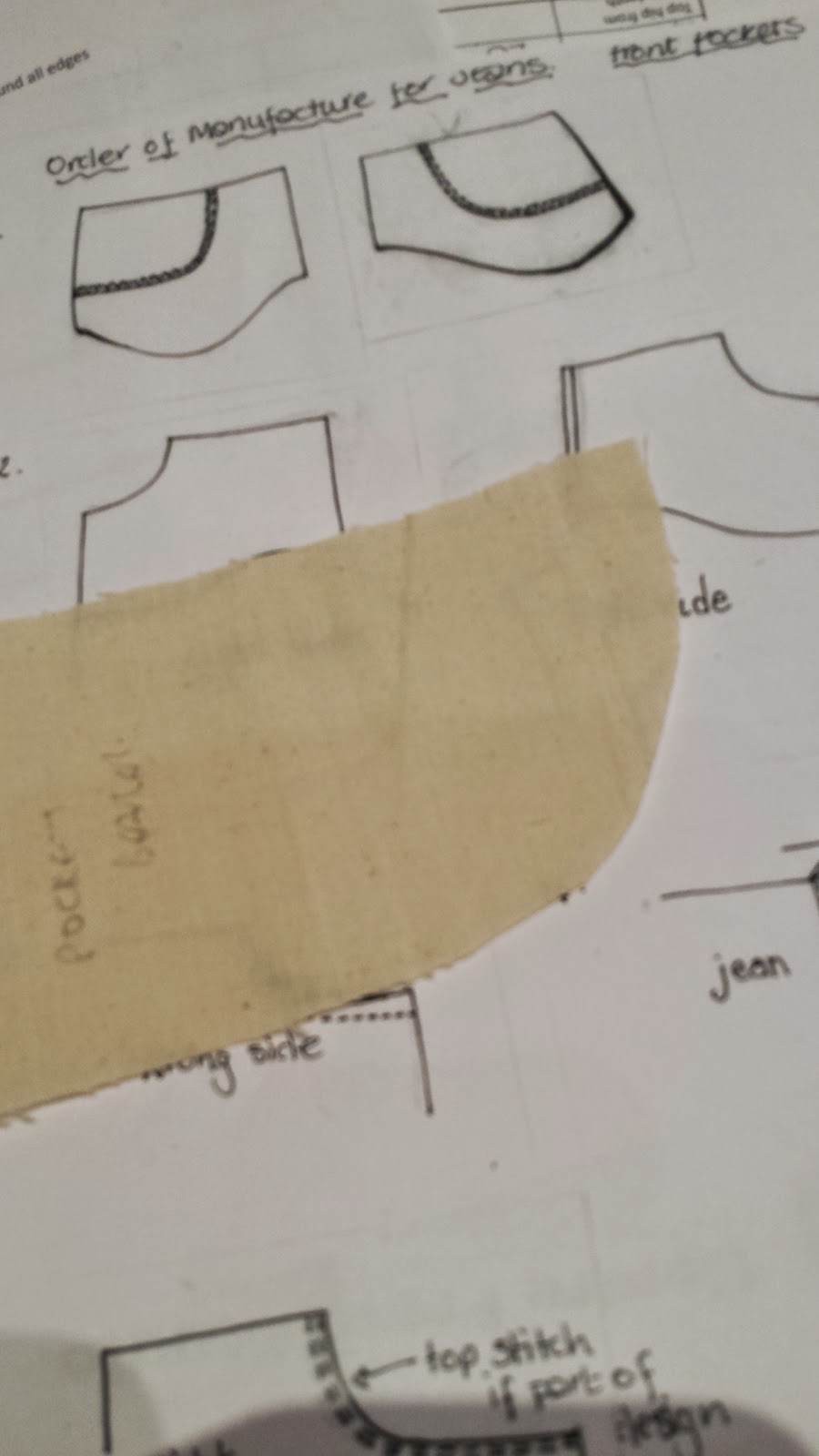Here are photos to end of stage 4. Plus how I think stage 5 is going to go. I didn't' even know my phone could do that trick with the small insert and I couldn't work out how to switch it off. I eventually managed by switching off whole phone - there must be an easier way, though.
I've seen a few posts on jeans sew-a-longs e.g. for the Ginger jeans. It strikes me that I might find it useful to read those. I don't have a jeans' pattern and I'm not sure what I would go for. I have seen reviews of Jalie jeans, Jamie jeans, Ginger jeans and possibly some others. Any recommendations? I do not want skinny jeans and would prefer a high rise. Another option is self drafting using the Sure Fit Designs system and modifying for jeans. I'm slightly concerned that they would look too grannyish as I don't have the necessary style knowledge - I am a grandmother and I'm not a fan of high fashion (on me that is) but I do like to give a nod to the current century! They would certainly fit better. Maybe skinny jeans that actually fitted my not-skinny legs would look okay; when I've tried on RTW, they look awful.
It might still be better to get trousers to fit well then go on to jeans later. I do have fabric for trousers but not jeans; I'm not sure if the best fabric to go for - should there be some stretch in it?
The weather held up and I got to the class last night. Since then, it has deteriorated. Unfortunately, as have I! Normally, I go to my weekly sewing class today but the combination of the roads, a nasty cough and the lack of a specific project made me decide to stay at home. I'll do this post and finish the waistband lining on the grey wool skirt I needed to modify - that's what I would have been doing in class. I had already deconstructed the skirt to take in the yoke, yoke lining, skirt and lining and last week I stitched them all up again but L, my tutor, suggested that handstitching the lining down would give a better finish than the stitch-in-the-ditch I did the first time around. I also have a couple of pairs of trousers to add faux hems to in order to lengthen. Hopefully, next week I'll start a specific project - though it's been very useful in January to catch up with some repairs.
I didn't take finished pictures of the green dress I was mending for my daughter. It was quite a puzzle.
 |
| In this picture, you can't quite see that the rear of the other strap is wide |
 |
| This loop allowed the thin strap to be lengthened; the torn area was repaired with a patch from the flap. It really disintegrated when the stitching was unpicked. |
 |
| This rear flap was completely removed |
 |
| There's no change from the front. |
Anyway, last night's jeans class. A fellow student, Linda, and I were the only two to have completed to stage 4. We had both looked at the next stage and interpreted it differently. We were able to work out that I was correct in pinning wrong side of the pocket to wrong side - she had done right sides - but she was correct in the amount of fabric to be pinned. I had thought it was the whole pocket. She realised the front was taken up in the fly and the side in the side seam. The tutor, D, was busy with other students but was able to confirm our conclusions. It's quite satisfactory when you work something out yourself.
After that, it was fairly straightforward. Seamed wrong sides together, turned, pressed and seamed right sides together to make a French seam. Then the layers were stay stitched together.
 |
| 1st stitch line |
 |
| Preparing to stich 2nd stitch line |
 |
| Layers pinned together ready for stay stitching |
 |
| View of front before basting together |
Then onto the back pockets. D showed us how to make a cardboard template of a pocket so that our two pockets would be identical. I chose a straightforward shape and used the tutor's sizes. We then drew onto calico, adding a 1cm seam allowance all around except at the top of the pocket where it was 2 cms. After cutting the pocket out, we pressed using the template for accuracy. We had a choice for the top of the pocket. The top would be turned over twice and stitched down. However, the choice was in what to do with the side seam. Linda and I both chose to turn in the side seams first so that our top hems would look smooth from the top.
 |
| Edges were folded and pressed over template |
That's where the class ended. Our sample jeans had not been marked with pocket position. So next week, we will start with D showing us how to position the pockets.
It's already evening and I didn't get the skirt yoke started. That's the
danger of staying at home - other things always seem to take priority, even
when you're not feeling well!
































